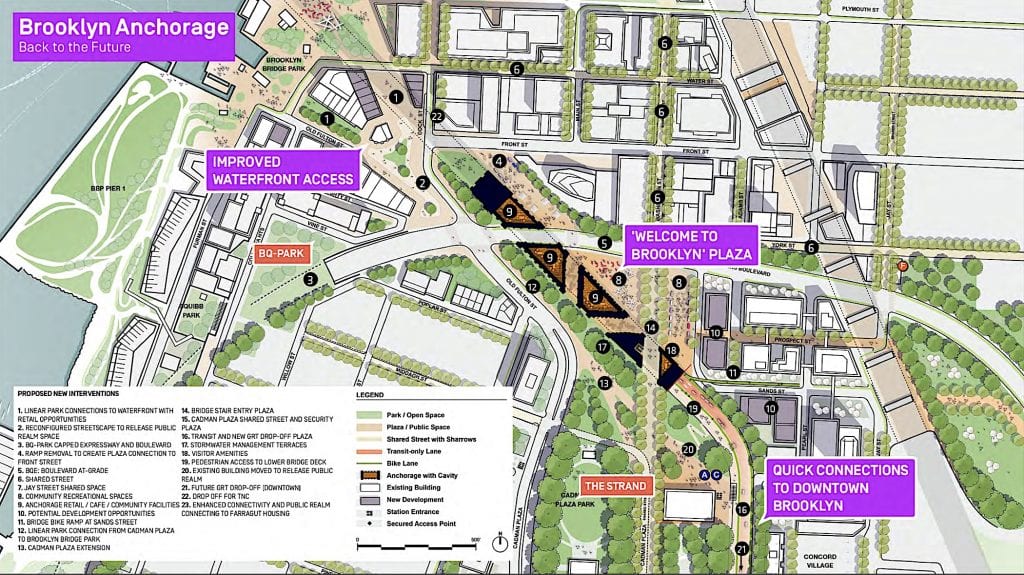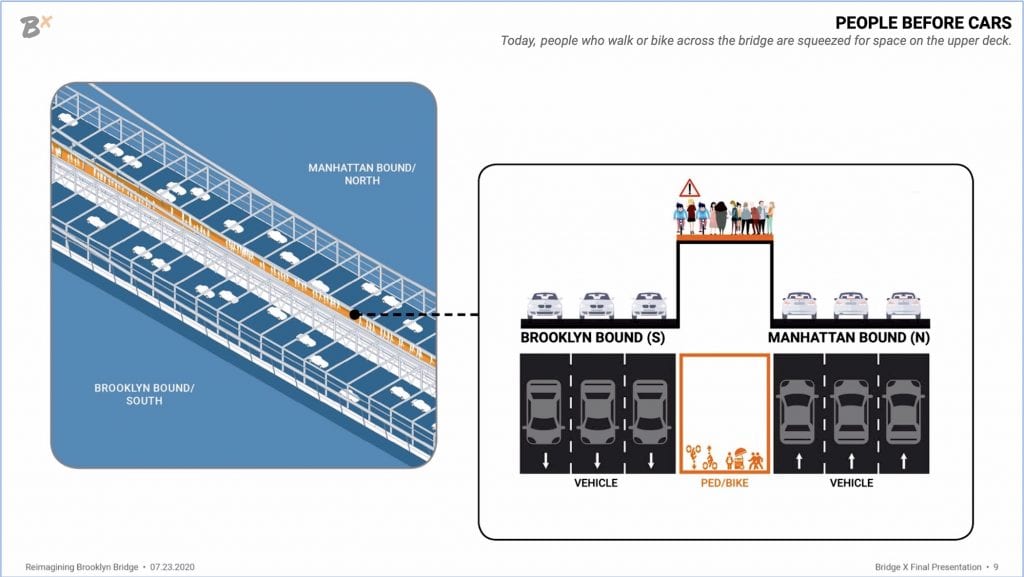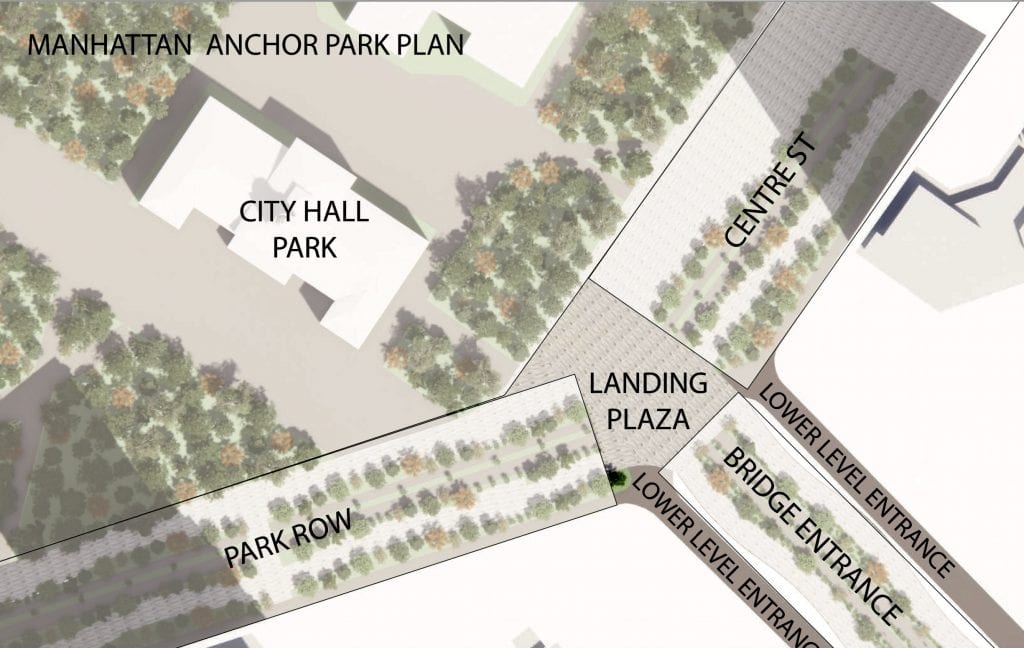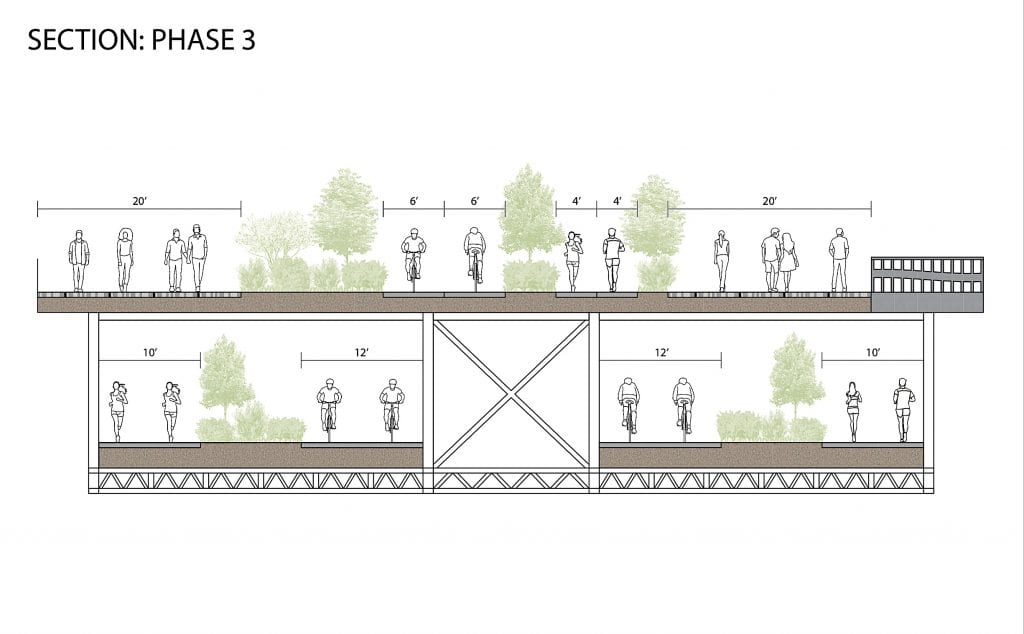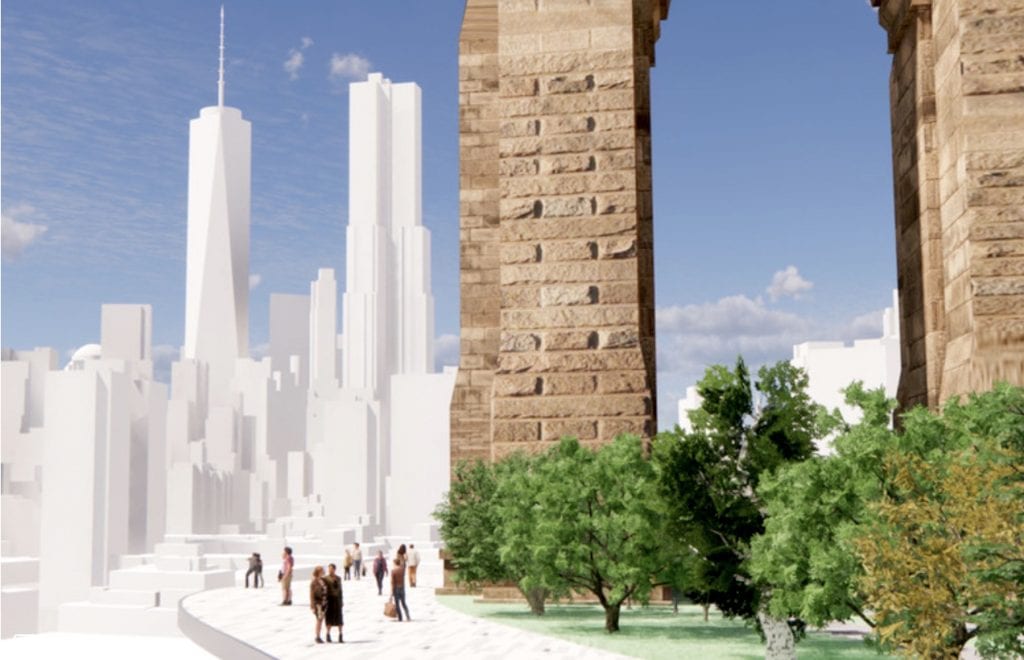
Professional winner: Brooklyn Bridge Forest (image © Pilot Projects Design Collective)
While looking for new adventures on a visit to New York City, friends suggested that I take time to walk across the Brooklyn Bridge—certainly a New York icon. For those intending to undertake this trek across the bridge for the first time, the bridge consists of layers, with a large platform for pedestrians on top of a lower level for cars and the metro system. Traversing this connection for the first time between Manhattan and Brooklyn is not just about getting from one place to another, but experiencing a great scenic view of both boroughs and occasionally interacting with other bridge crossers. As for the latter, they provide a flavor of the city’s demographics, as opposed to similar experiences one might have of the city’s inhabitants when riding the city’s subway system.
A few years passed from that visit, and while waiting for PS1 to open to see the most recent exhibit a few years ago, I encountered two young Italian architects from Milan, visitors to the city for the first time. After we had spent some time together at PS1, they said they had another free day to explore the city and wondered if I had any suggestions. After mentioning the Brooklyn Bridge, I almost forgot about the whole episode until I received an email from Milan a few days later. The Italians stated that they had taken my advice, and that crossing the bridge turned out to be one of the highlights of their trip to NYC.
The Competition
With all the bike and pedestrian traffic the bridge has generated over the past few years, congestion during peak hours has become a serious problem. In an effort to address solutions to these conditions, the Van Alen Institute in conjunction with the New York City Council launched the international design competition, Reimagining Brooklyn Bridge. Not only was the intent to focus on the bridge’s infrastructure issues, but serve to use this competition as a “testing ground for designs that serve our communities in need.” The resulting competition was split into two categories: Professional and Young Adults (21 years of age or younger). Three finalists were to be shortlisted from entries in each category and provided with stipends for a second stage where the proposals were to be fine-tuned.
Among the criteria considered by a jury representing a wide range of issues were: team composition; accessibility and safety; environmental benefit and security; respect for the bridge’s landmark status; feasibility; and “magic”—i.e. new ideas that surprise, delight, and fascinate. The jury panel consisted of:
• Peg Breen, President, New York Landmarks Conservancy
• Andrew Brown, Associate Director of Research, Van Alen Institute (non-voting)
• Marla Gayle, Managing Director, SOM
• Hon. Jonathan Gardenhire, Artist & District Leader, NYS Assembly District 65, Part B
• Danny Harris, Executive Director, Transportation Alternatives
• Helen Ho, Co-Founder, Biking Public Project
• Isabella Joseph, Student, Bernard and Anne Spitzer School of Architecture, City College of New York
• Regina Myer. President, Downtown Brooklyn Partnership
• Amy Plitt, Writer and Editor
The Finalists
Most of the finalists in both categories concentrated on the major issues: separation of the cyclists from the pedestrians, reduction in vehicle lanes on the lower level, additional activities for pedestrians at the upper levels, sustainability, and improvement to the areas at either end of the bridge with vegetation, etc. All of the finalists indicated phasing as the modus operandi for completion of their projects
The focus of the Professional Winner, Brooklyn Bridge Forest by Pilot Projects Design Collective with Cities4Forests, Wildlife Conservation Society, Grimshaw and Silman, emphasized the use of 20,000 hardwood planks from Guatemala as the primary surface for their boardwalk. Their configuration for the infrastructure traffic plan was logical and probably easy to implement. Attention paid to the areas fanning out from the approaches to both entrances of the bridge were logical and well documented. The use of hardwoods from a forest in Guatemala brings up the question of ecology: how long would it take to replace the trees removed from this forest—even if an effort was undertaken to replant similar hardwood trees
The Young Adult Winner, Don Look Down by Shannon Hui Kwans Kim, and Yujin Kim, suggested an upper level of the bridge as glass, whereby pedestrians could catch various events and graphics below in passing. Although quite an imaginative and eye-opening feature, this would probably have been deemed too risky in terms of maintenance for realization. But the team did excel in their lighting treatment of the bridge and in the areas connecting the bridge to the city. An interesting and doable suggestion was the conversion of one of the unused anchorages into a gallery for some public art.
Professional Winner: Brooklyn Bridge Forest
Pilot Projects Design Collective with Cities4Forests, Wildlife Conservation Society, Grimshaw and Silman
Montreal and New York
Team Members
Scott Francisco; Dr. Sarah Jane Wilson; Christine Facella; Dr. Jeremy Radachowsky; Justin Den Herder, PE; Ben Fryer; Aaron Vaden-Youmans, Noah Garcia, Alexandre Rossignol, Arianne Pizem
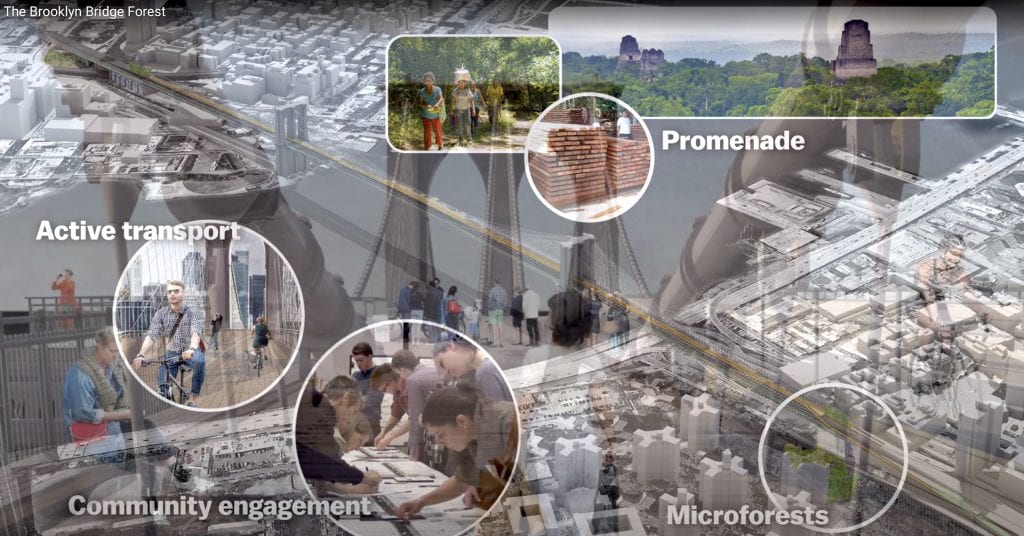
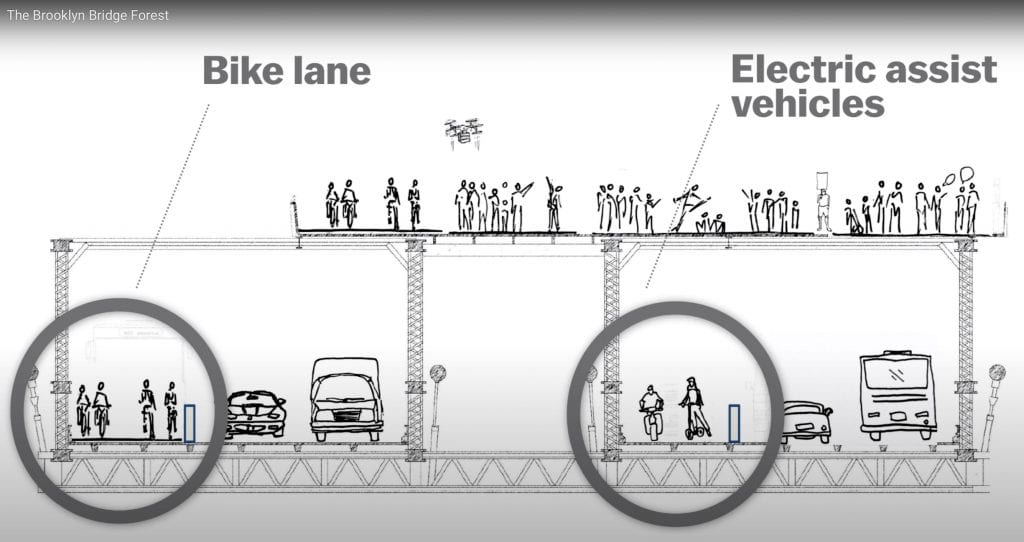




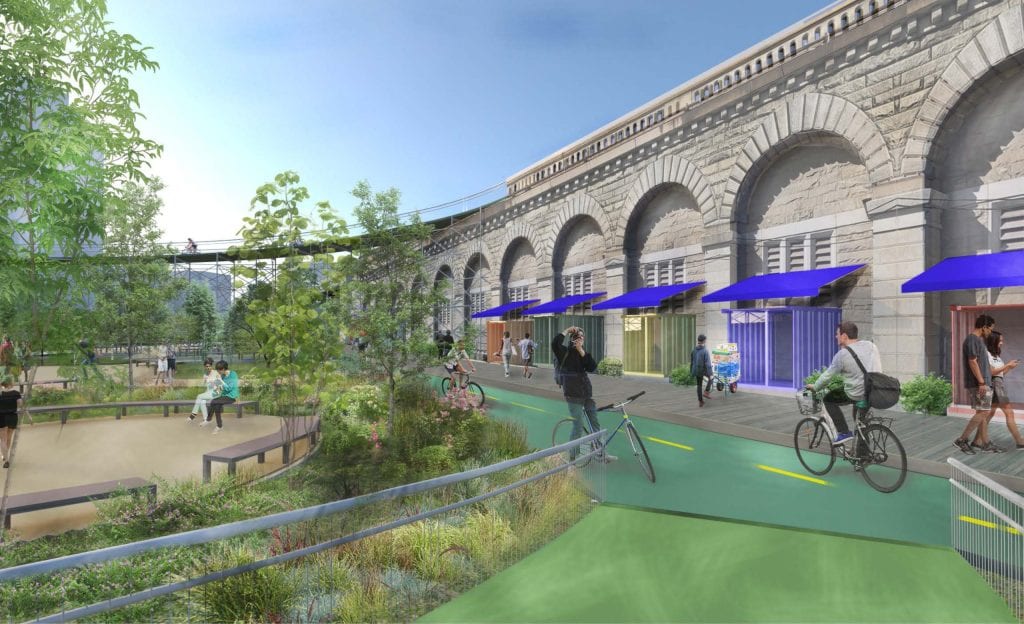
Images © Pilot Projects Design Collective
Finalist: Back to the Future
BIG + ARUP
New York
Finalist: Bridge X
ScenesLab + Minzi Long + Andrew Nash
New York, Boston, and Vienna
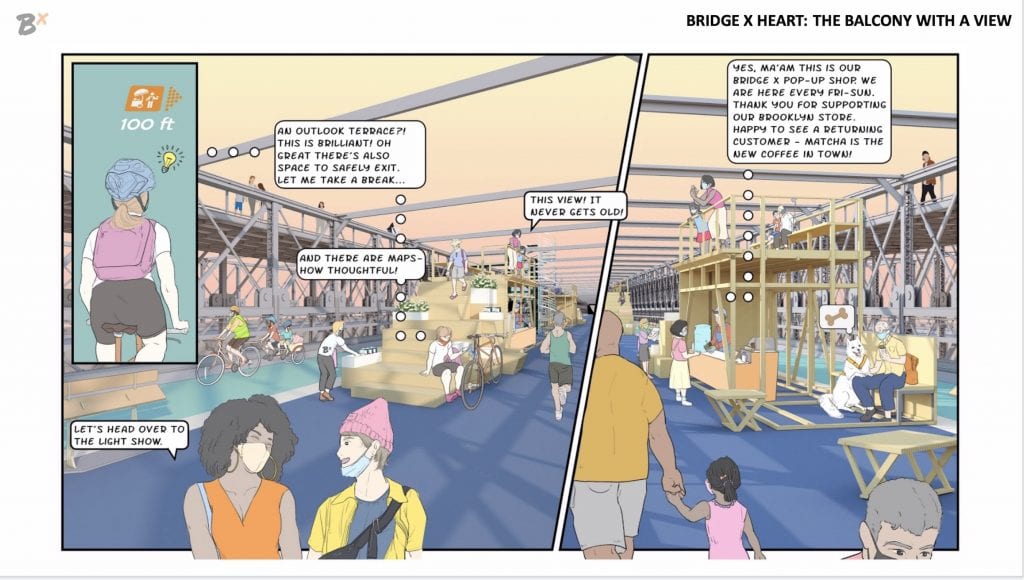

Images © ScenesLab, Minzi Long, and Andrew Nash
Young Adult Winner: Look Down
Shannon Hui, Kwans Kim, and Yujin Kim
Hong Kong, Bay Area, CA, and New York
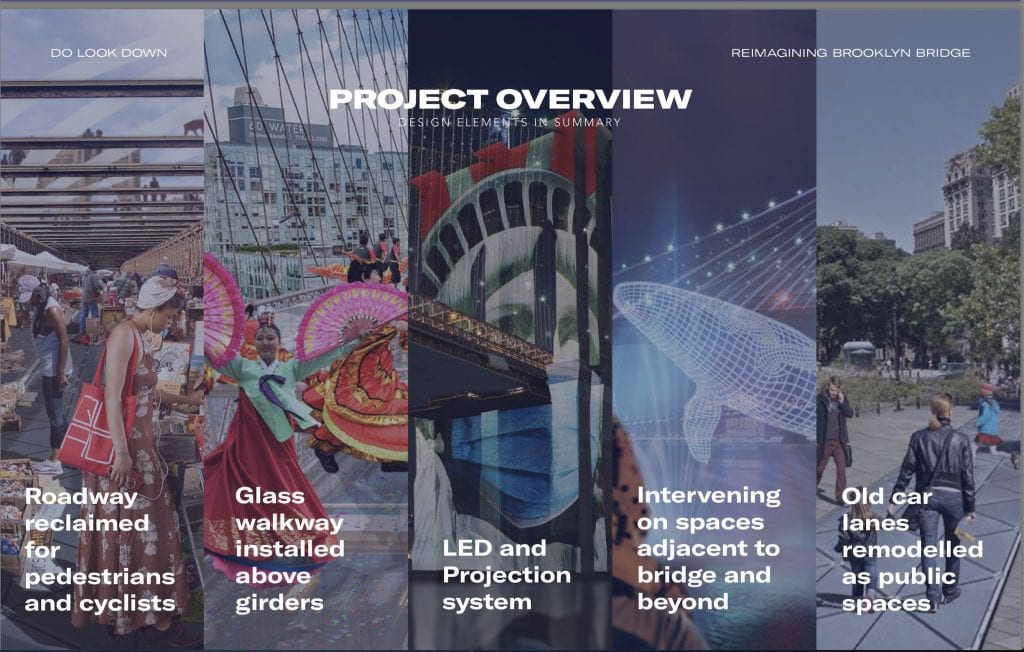
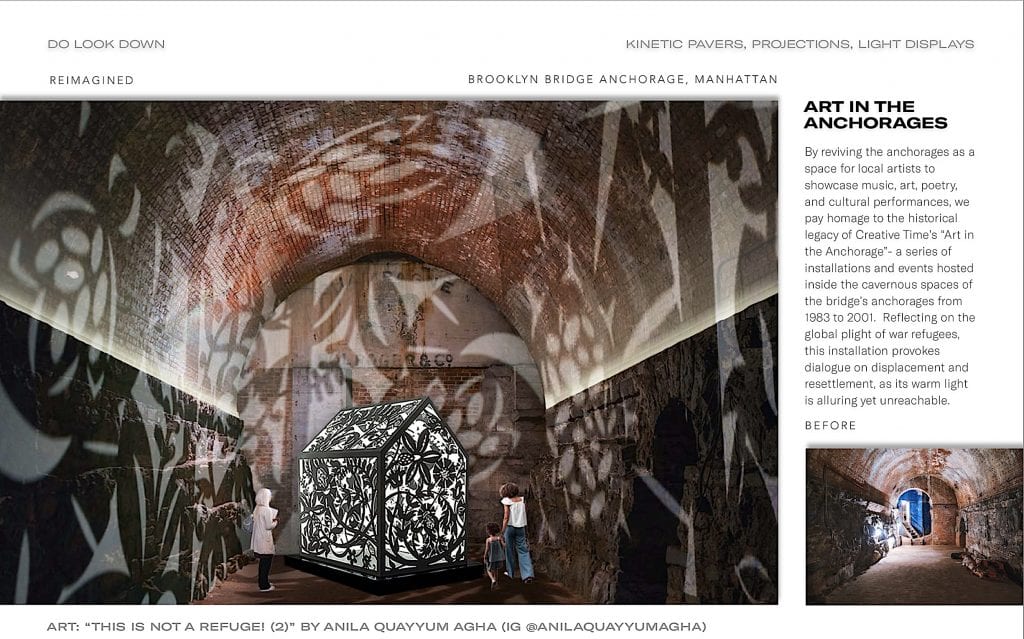
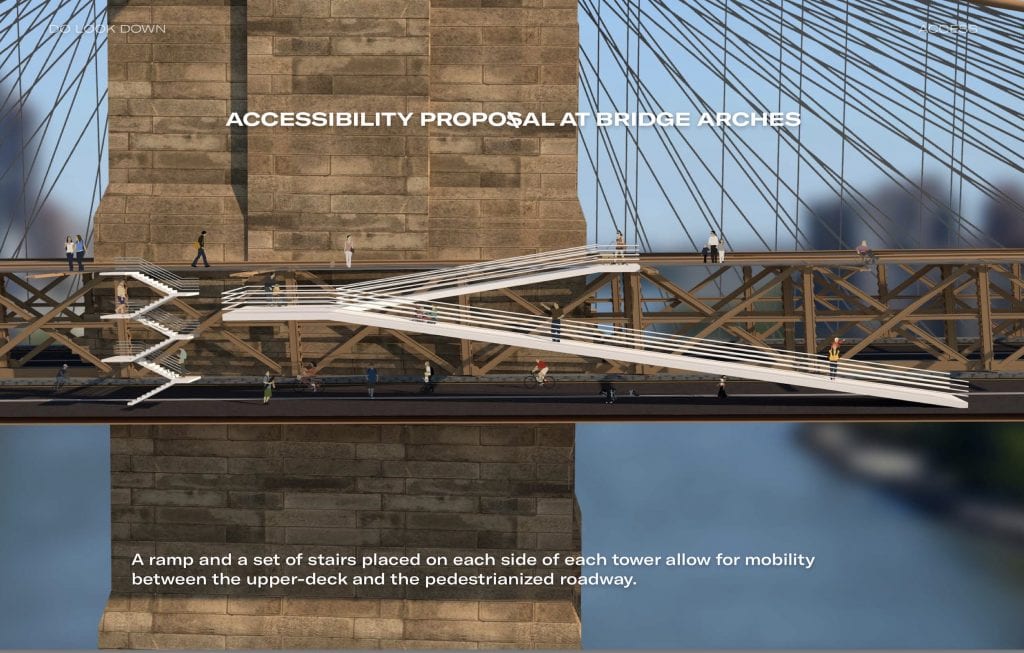
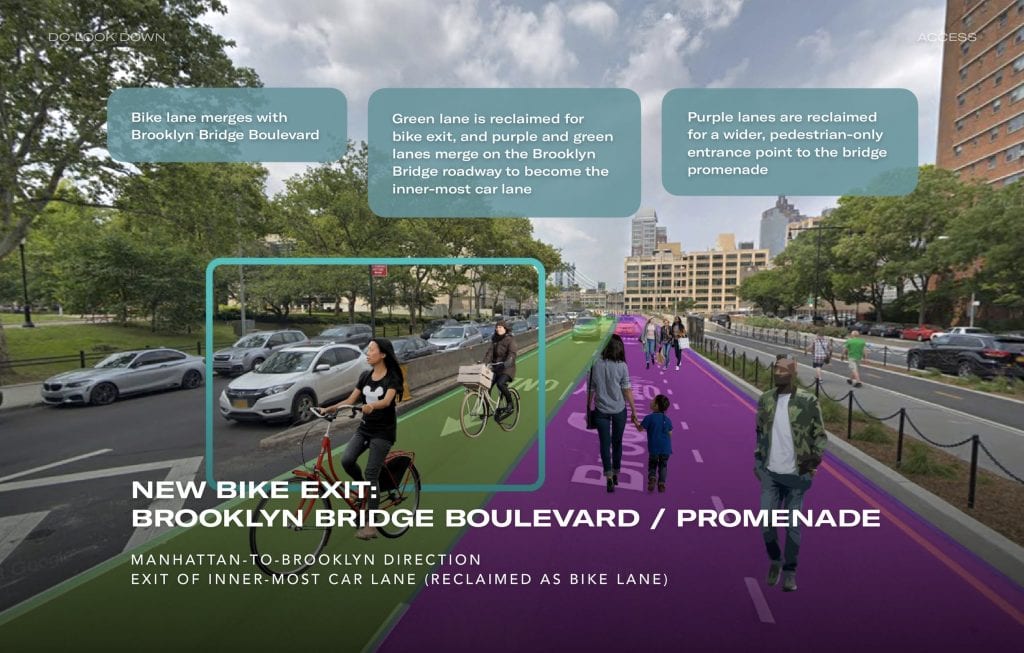
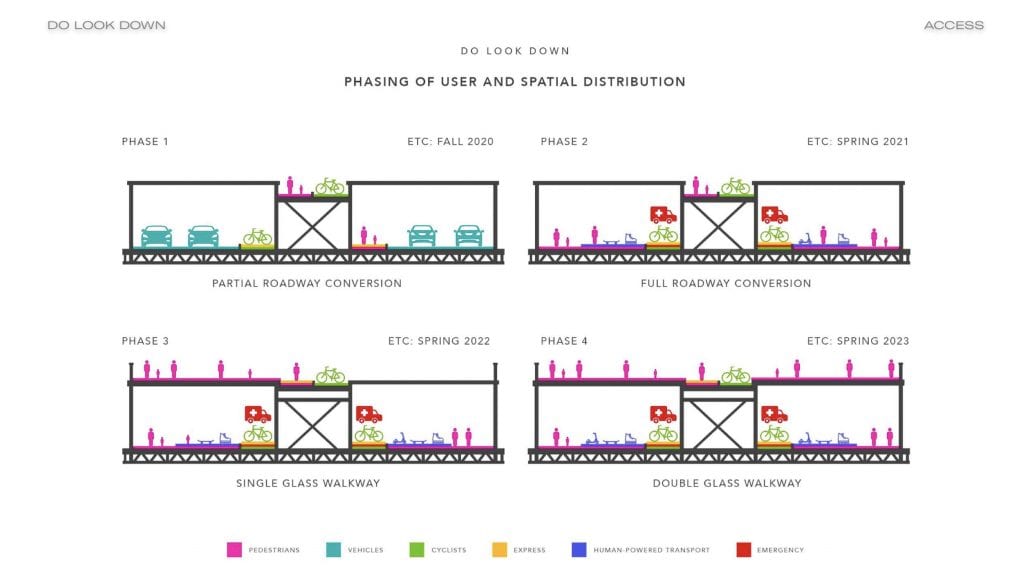
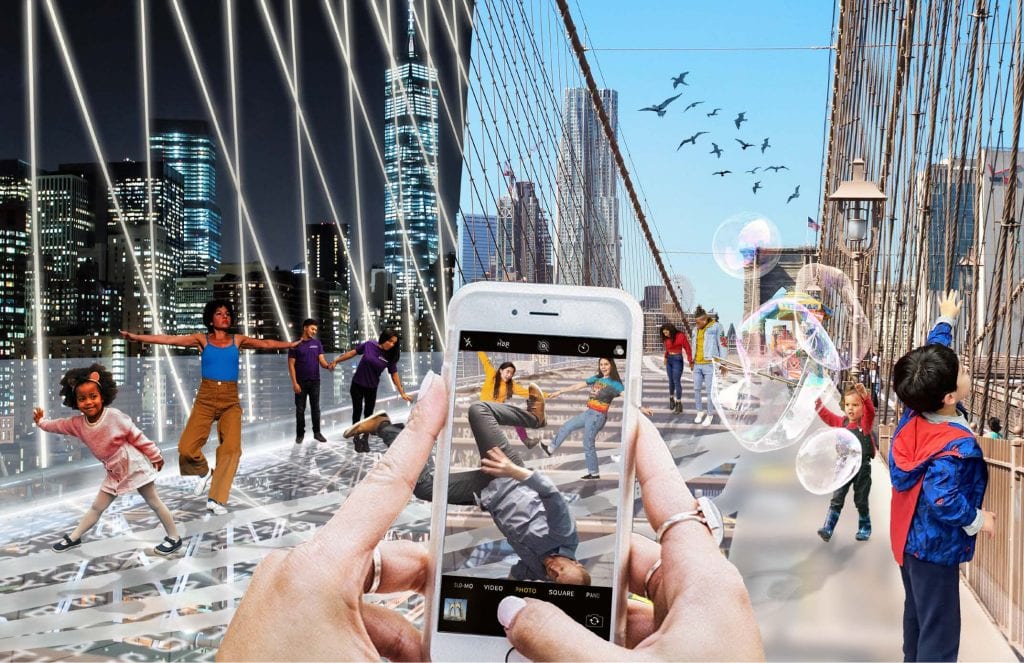


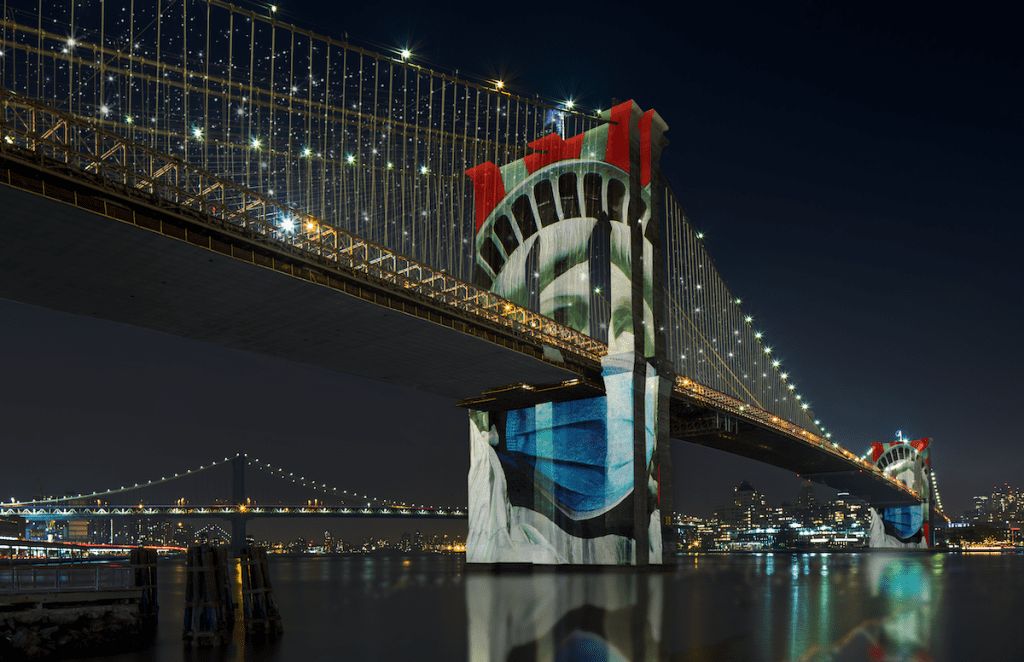
Images © Shannon Hui, Kwans Kim, and Yujin Kim
Finalist: The Artery
Lukas Kugler
New Milford, CT
Finalist: The Cultural Current
Aubrey Bader and Maggie Redding
Knoxville, TN
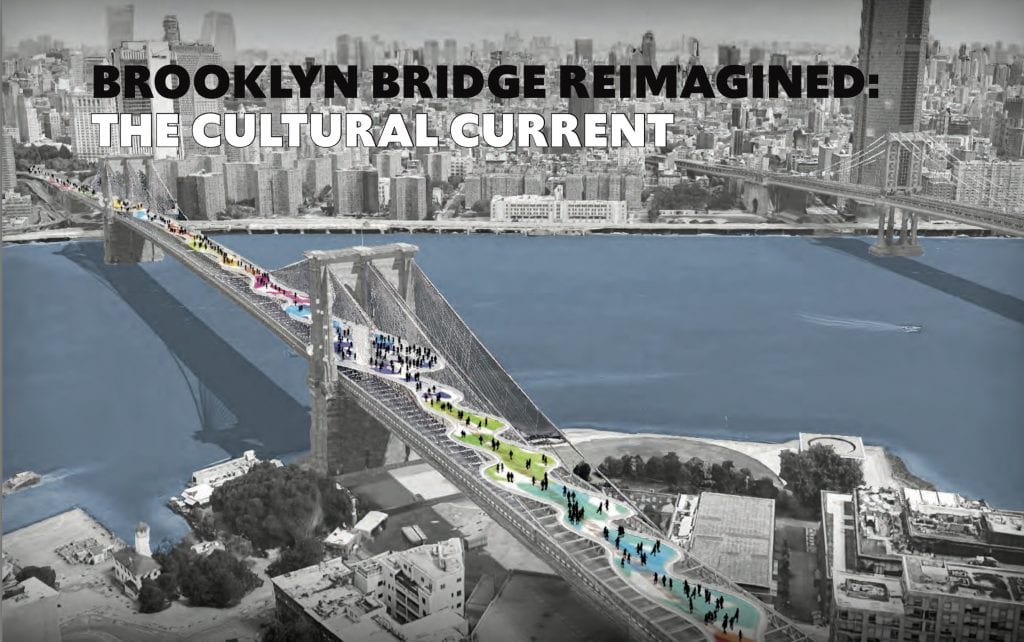

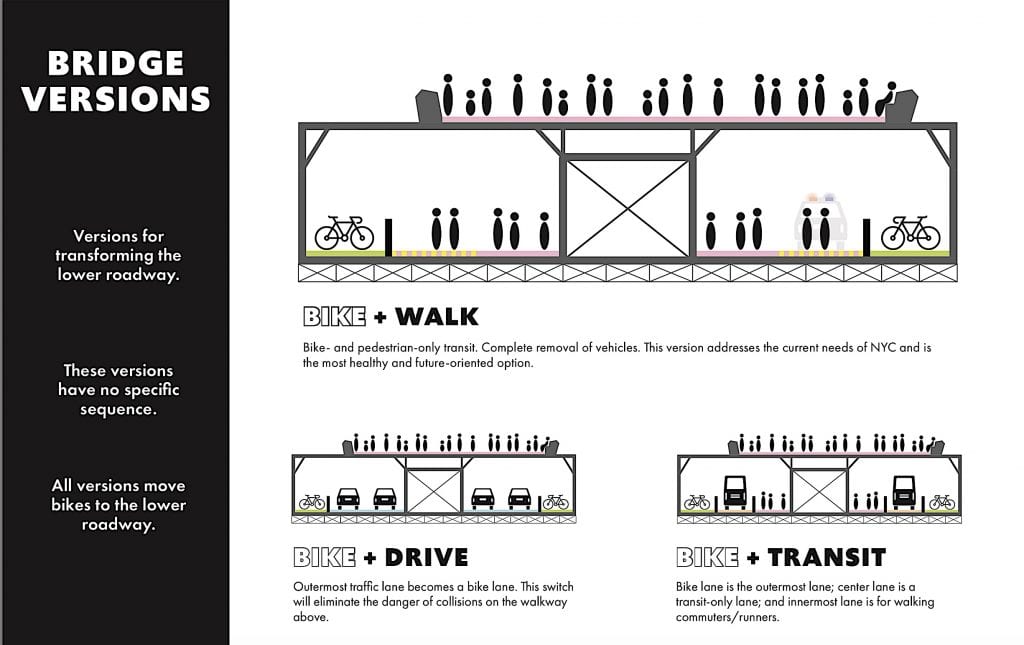


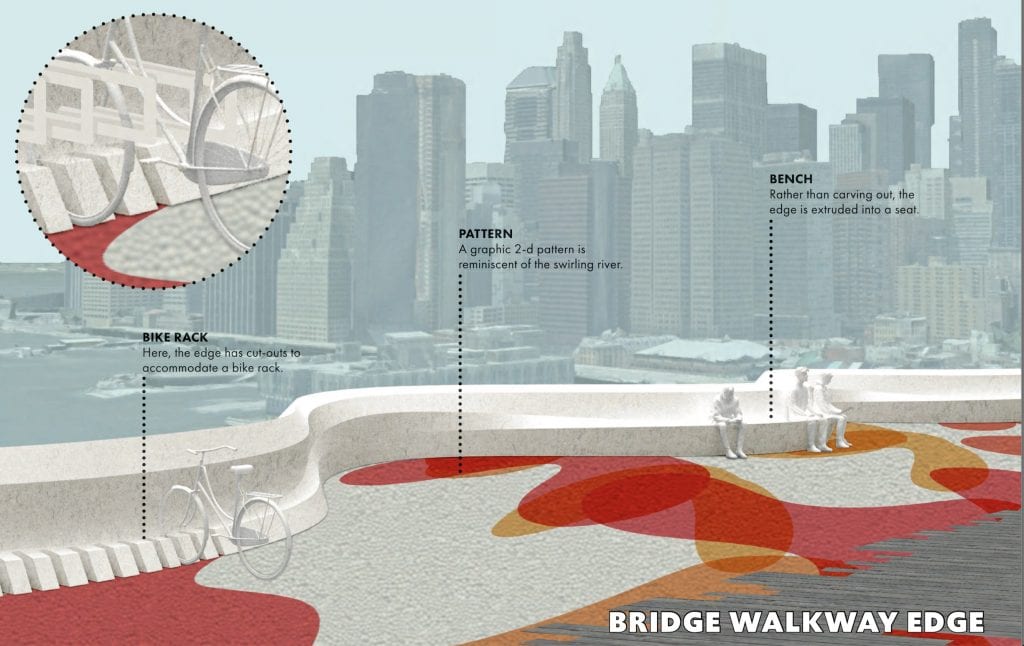
Image © Aubrey Bader and Maggie Redding






























